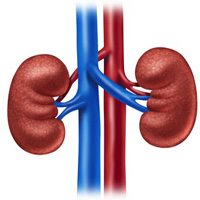Rigid and flexible ureteroscopy (URS/RIRS) management of paediatric urolithiasis in a not endemic country

Accepted: October 27, 2020
All claims expressed in this article are solely those of the authors and do not necessarily represent those of their affiliated organizations, or those of the publisher, the editors and the reviewers. Any product that may be evaluated in this article or claim that may be made by its manufacturer is not guaranteed or endorsed by the publisher.
Authors
Introduction: In the last years due to miniaturization of endoscopic instruments and percutaneous surgery, endourology has become very popular in paediatric urinary stone managment. We reported our single-centre experience in retrograde endoscopic procedures in children. Results and complications of URS/RIRS are discussed.
Materials and methods: We retrospectively reviewed our experience in patients ≤ 16 years old affected by urinary stones who underwent URS/RIRS procedures performed by two surgeons with expertise in endourology. A total of 30 renal Units (RUs) underwent endoscopic procedures (URS, RIRS or both). Surgical complications according to the ClavienDindo’s classification and stone-free rate were evaluated at 3 months follow-up. Success of URS was defined as stone-free status after single procedure while RIRS success rate was considered as presence of residual stone fragments smaller than 4 mm at first procedure.
Results: The mean age of our patients was 8 years, range 2- 16 years. A total of 30 renal units (RUs) underwent 40 endourological procedures (23 URS and 17 RIRS; 10 children underwent both procedures at the same time). 17/30 (56.6%) RUs were pre-stented before surgery. The stone-free status was achieved in 23/30 renal units treated, with a 76.6% success rate. The remaining 7 patients had residual stones greater than 4 mm and underwent further treatments. After a second surgery the stone-free rate turned out to be 93.3% (28/30 renal units).
Conclusions: Rigid and flexible ureteroscopy (URS/RIRS) is a reliable technique for treatment of < 2 cm urinary stones in paediatric age group. It shows low rate of major complications and promising results in terms of stone-free rate.
How to Cite
PAGEPress has chosen to apply the Creative Commons Attribution NonCommercial 4.0 International License (CC BY-NC 4.0) to all manuscripts to be published.

 https://doi.org/10.4081/aiua.2021.1.26
https://doi.org/10.4081/aiua.2021.1.26



